What do Assistant Editors Have to Know?
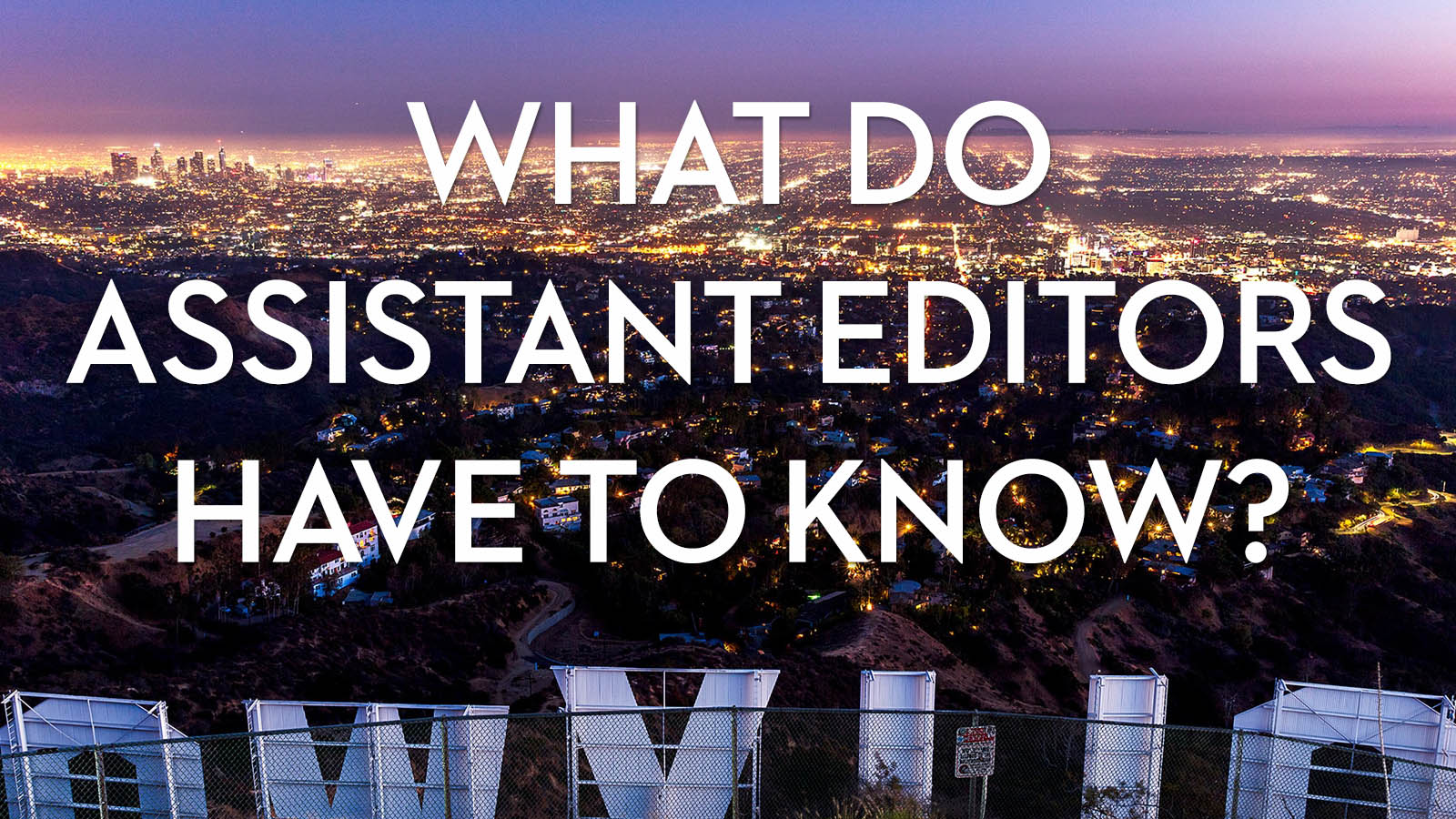
Photo by Daniil Vnoutchkov on Unsplash
The first step to making your way to the editing chair on a big TV show or movie is to become an assistant editor. The chances are you’ll get your foot in the door as a second assistant or an editorial intern, and then from there start to acquire the skills and experience necessary to make your way onwards and upwards.
In this post I’m going to share (with permission!) some insider knowledge from a closed Facebook Group full of Assistant Editors and draw out some exemplary problems and solutions that might help you out on your next assistant editing gig, or as they say ‘forewarned is forearmed‘.
I’ll also draw your attention to some excellent free resources and exceptional paid training that might help kickstart your own editorial career.
With regards to starting as a second assistant editor and understanding other editorial positions I’d highly recommend checking out these previous posts for a ton of great details on the day-to-day work as well advice on getting into the industry in the first place.
The first of these two posts are interviews with Rob Sealey, now an assistant and first assistant editor his recent credits include films such as Star Wars: The Rise of Skywalker, The Witches, Skylines, Holmes & Watson and Tomb Raider.
The best piece of advice I keep repeating from Rob; “Don’t be intimidated by the film industry…”
- How to Become a 2nd Assistant Film Editor
- How to Be a 2nd Assistant Editor
- Editing Mission: Impossible – Fallout (Editor, VFX Editor, 2nd Assistant, Editorial Trainee)
- How to Become an Assistant Film Editor
- How to Become an Avid Assistant Editor Overnight
So what do you need to know to be an assistant editor?
In very broad terms, here are some of the tasks you have to be able to handle (under pressure) on daily basis, with utmost accuracy and efficiency.
- How to ingest, organise and sync dailies
- Fill out and maintain a codebook and dailies paperwork
- Assist with temp VFX, ADR and sound design spotting sessions
- Create and deliver turnovers to other departments
- Keep your 1st Assistant and Editor happy!
The best course I know of to teach you how to do all of these things, and a whole lot more is Master The Workflow, created by editor Lawrence Jordan and First Assistant Editor Richard Sanchez.
The course is a fantastic mix of highly granular practical teaching on the exact work required of assistants as well as dollops of wisdom on breaking into and progressing within the film industry.
As a quick recap you get: 32 video lessons grouped into 6 modules totalling almost 13 hours of teaching content. Access to Richard’s very own codebook (many assistants closely guarded secret sauce) – which has been updated several times and access to the MTW Alumni closed Facebook group. Additional content is also occasionally added, such as a recent 22 minute lesson on performing temp VFX work, such as rotoscoping, in Avid Media Composer.
I’ve previously reviewed the course in quite some depth in these previous posts (so check them out for more details) but in this post I wanted to share some more free resources, as well as highlight the huge benefits of this third element; the exclusive Facebook group.
- Master The Workflow Feature Assistant Editor Immersion 1.0 Course Reviewed
- Master The Workflow – One Year On – Has it worked?
On the face of it, it might seem like the least tangibly valuable part of the course, but in fact it actually massively extends the life-time value of the course.
The group will help you build your network of other assistants local to you (MTW students are located all over the world), respond to regular job postings, and tap into a huge depth of editorial wisdom and troubleshooting knowledge. Offering timely answers to everything from tech support to how to best navigate the politics of post production.
Interestingly several of the group’s members mentioned that adding the completion of Master The Workflow course to their resume, really helped to add some credibility to the education section of their CV.
I’ll get into the Q+A’s from the group in the next section but first, if you do nothing else, make sure you grab all of these freebies from the Master The Workflow site.
In return for your email address you can get access to:
- 10 page guide – Your 5 Key Contacts on Set
- 9 page guide – What To Do Right After You’re Hired
- Podcast – Becoming a Professional Assistant Film Editor
- Podcast – The Assistant Film Editor’s Digital Codebook Explained
Recently This Guy Edits shared an extended interview with Lawrence Jordan on his process of editing the VFX heavy feature film, Sextuplets, for Netflix. The two discussed how to handle so many VFX shots, what it’s like working for Netflix, Master The Workflow and what he looks for in assistant editors.
It’s a great conversation and well worth making the time to watch the whole thing.
Insider Answers to Common Assistant Editing Questions
Here are just a few exemplary questions and answers, selected from hundreds of posts on the private facebook group for Master The Workflow students and alumni. There’s a lot to learn and so it helps to be doing that learning in community with others!
For the sake of privacy I’ve anonymised the text except for the following contributors.
RS – Richard Sanchez | LJ – Lawrence Jordan | SH – Steve Hullfish | QP – Question Person | A1/A2 – Answer Person 1 / Answer Person 2 etc.
Q – My editor is complaining that his Avid is taking too long to open a scene bin after he has pressed “match frame” and “find bin” from his sequence. From your experience, are there any red flags I should be looking out for, for the purpose of speeding up that workflow?
RS – How big is your project? I’d suspect a big project. So things you can do include creating an archive project where you keep old reels. Another thing is if you import huge SFX libraries, that will do it. That’s one of the main reasons why I use iTunes to search VFX outside of the project and only import what I need. Outside of that, how old is your editors system?
Another strange one is are they using Google Chrome? Chrome uses a ton of resources and I once worked on a show where if the editor had Google Chrome open, the Avid would choke and playback choppy, but as soon as we either closed Chrome or switched to Safari, it worked fine. I prefer Chrome but this is something to think about if you’re seeing performance issues.
A1 – Keep a minimum number of sequences in any working bin. Keep old “archival” cuts in a bin that is rarely left open.
A2 – How full is your Attic?
A3 – In addition to the suggestions above… Are you on an Avid storage like Nexus or ISIS? When time is available you want to run a redistribution on your project workspace. After doing so on the editor’s system, open all the bins then close them (open them in separate not tabbed-in-one).
One test to see if it’s related to the shared storage is copy the project locally and see if the same lag time is there for find bin. Lastly if you are using Facilis for your shared storage, make sure your project workspace is set to protected/mirror There is a known issue of delay for quickly accessed files like bins on non protected work spaces.
Q – On the film I just started on as an assistant, the previous editor cut with subclips that only have the audio mix tracks. The lavs and boom mic are there, I just have to match back to the master clips. Is there a way to quickly swap out the mix tracks for the lavs in the timeline without overcutting?
A1 – I don’t know a way to do this without overcutting. I use my Logitech mouse for things like this all the time, just program a few keys after working the process out on paper. If you were going to overcut, this won’t be super straightforward, since you will have lavs on different tracks for different characters/scenes. But if you prep macros for each track and write down which characters per scene are on each track it shouldn’t be too bad.
A2 – I built a macro for this very purpose, you can use keyboard maestro and a custom Avid keyboard shortcut to cut ’em back in at the press of a button.
A3- On Mac I know of an apple script that does this automatically. Let me see if I can dig it our for you.
Q – Looking to print out scene wall cards with the poster frame in Wall Cards 4×6 pic, is there an option to print them 6 to an A4 page like in the Wall Cards (text) layout? What is the best way to import the poster frames?
RS – Manually. Export a representative frame from the scene and manually drag it into the container field.
A1 – You can export the PDF as 4×6 cards using the button on the layout. This will give you a PDF where each page is a single 4×6 card. Once you open that PDF and send it to print, you can select the paper size and layout reformatting (see attached, standard OSX print dialogue). On another note, for better space efficiency you might want to go for 4 to a page or 6 to a page.
QP – Thanks very much sir. Please tell me… how did you get the poster frames out of Avid and into FM to make the scene wall cards?
A1 – Duplicate your sequence, clear any markers on the duplicate, put a marker on every frame you want to export. Once you ‘export to file’ using these settings it’ll output a screenshot for every marker in your sequence.
SH – I know this is not a possibility for many of you, but I have a Photoshop template that I use to put two images and scene number and name and description on a single 4×6 photo print and then I send them to Walgreens. I got 146 scenes printed for about $30.
And the cool thing is that the glossies from Walgreens work with erasable markers, so you can color code them with markers and wipe them off. Obviously, some people would be a bit more concerned with security, but for an indie, it worked great and looked 10x better than the printer copies I’ve seen up on most people’s walls.
Valuable advice from Master The Workflow co-founder and Digital Codebook creator, Richard Sanchez
RS – I wanted to share a work story as a bit of advice, coming off the heels of the release of the Digital Codebook 2.7.1, but I’ll start with the point of it all, which is that it is far more important to understand the process fundamentally than to use a tool as crutch. That tool, in this case, being the Digital Codebook.
I’m currently working on a feature that needed to replace their VFX Editor last minute. I stepped in to see the project through to the end. On the plus side, I got hired. Wheeee! On the minus side, they have an established database, and there’s nothing wrong with it, it’s just not mine, and not in my comfort zone.
I’ll admit, I prefer the Digital Codebook for some of the features to speed up the process and also provide its own set of check and balances that help keep me organized and accurate. While, I could theoretically export all of this data to get it into my database, at this point, it doesn’t make a ton of sense to reinvent the wheel, so I’m going to bare with it.
The point being, in some cases you’ll start the show from the beginning and you’ll get to make all of those workflow calls. Sometimes, you’ll jump in midway and protocols will be in place, at which point you’ll need to determine if it’s better to break it apart and build it back up, or follow a path of least resistance and push on forward.
Knowing the process and the purpose is always more important that going through the motions. Don’t get overly used to one way. If you know why something is needed, you can figure out different ways to do it.
Q – Now that I’ve completed the MtW program, any ideas where I can apply to be a 2nd Assist?
Until I use the stuff I learned in a practical situation, I’m not going to retain the information I learned. So I figure being a 2nd would be the best option in order not to get overwhelmed the first time out. Who hires a 2nd?
A1 – 1st Assistant Editors and Post Supervisors. As you watch shows and films, get their names and contact them. Look people up on IMDB and contact them via Facebook.
RS – I got my start as a 1st on indie films. They were films that didn’t have a 2nd so I became a 1st by default. It’s scary, but I’ve found the trial by fire method to be valuable for me overcoming a sense of fear of the job.
A2 – This business can be a long haul. You gotta build a network of people that want to employ you. That don’t come without putting in the work to network and send out your CV to everyone and anyone who might need an Assistant editor.
In the early days (before Facebook) I would send out 1000 CVs a week. I would normally get one long job out of that. At the end of that job… you guessed it… another 1000 CVs. And again and again until people get in contact with you. Having said that I’m a 20 year assistant and I still send out my CV for the excitement of not knowing what I might stumble upon!
Question re: exporting multichannel Quicktimes out of Avid: (for example, my deliverable 12 channel audio configuration requires L, R, C, LFE, Ls, Rs, Stereo L, Stereo R, SFX L, SFX R, MX L, MX R, VO, DX)
Do you need to pan each/any track alternating L/R, or can you leave all the tracks centered and export “Direct Out”?
In Premiere, we needed to make a multichannel sequence and make sure each pair of tracks is panned L/R (because the audio mixer will only let each track be assigned to a channel pairing, hence panning L to map it to Ch 1, R to map to Ch 2, etc).
I’m still not very familiar with what “alternating L/R” in Avid is used/useful for.
RS – I never use the Direct Out option. I’m go more old school. I export a QT Ref and make sure to uncheck “Mixdown Audio Tracks”. By doing this, you’ll make a QT Ref and each track of your timeline will be it’s own discrete channel. I export the QT Ref, and then I’ll either run it through Compressor if it needs to be a format other than DNxHD, or I’ll simply re-save it in QT7 Pro as a self contained quicktime.
QP – I meant to ask also, that means you don’t end up panning any of your tracks right? Just leaving them centered?
RS – Discrete channels shouldn’t need to be panned.
A1 – I had to do a LRC output. I did the multiple mixdown feature had all my mono dialogue and sfx go to a mono mixdown and my stereo elements (music and sound effects ) to a stereo mixdown. I then split the stereo to a single left/right panned everything and exported same as source direct out. (Did the mixdowns to simplify everything)
I checked the file using Telestream’s switch. I had 3 distinct tracks it saw as center mono, since they are direct that makes (sic) and their order would get decoded/encoded based on your track assignment set up. Since you are going direct, as said above, panning doesn’t have much of an influence. For ProRes direct out I believe you still need to set up the “audio container” in the custom settings of an Avid export.
Q – When making mattes for temp VFX comps I’ve sometimes had to make video mixdowns for my mattes. Since it’s temp, do I need to export the mattes to make a media element to turnover when I do VFX turnovers or will I be fine using the mixdown?
RS – I would talk to your VFX Vendor about what they want. A mix down won’t match back to the anything, but it might be helpful to see how you divided a shot.
What I find is more common is sometimes I’ll provide tinted references. So for example, if I have two plates in a split screen turnover, I’ll label the plates lt01 and rt01, but I might also make a special ref where I tint the left layer “red” using a color effect, and then I’ll note that I’ve provided a tinted ref to help make it obvious what plate is used for what part of the comp.
Q – Does anybody have Academy leader files handy that I can download? I usually carry that kind of thing with me, but I don’t seem to have it…
A1 – http://leaders.terburg.com/
Free Training for Assistant Editors
Editor Andy Wild has created a free course that helps to lay the foundations for the good working practices that assistant editors, working in Avid Media Composer on all kinds of levels of productions, should develop.
A prerequisite for getting the most out of the course is access to Avid Media Composer, but you can download the free version called Avid Media Composer | First here. I’ve previously written more about AMC First here, which includes a bunch of helpful tutorials.
The course contains 12 different modules each delivered in a mix of written articles and video tutorials. At the end of each module is a short quiz to help test and solidify your knowledge.
- The Role of an Avid Assistant
- Managing Media
- Know your storage
- Workflows
- Avid Projects and organisation
- Avid Media – Import and AMA
- Avid Essentials for Avid Assistant
- Exports
- Backing Up the Project
- Managing Avid Workstations
- Hints and Tips
- Assistants Essential Kit
It’s a great course because it is concisely and clearly written but its also a perfect introduction to the world of assisting for someone starting from absolute scratch. By not assuming any prior knowledge, no one will be overwhelmed by it.
The early modules will ensure you understand the essentials of both the interpersonal skills required to work in a post team, and also the basic technological lay of the land when it comes to handling dailies to ensure they’re backed up in 3 places, stored on the appropriate storage and delivered in the correct codec etc.
The bulk of the rest of the course guides you through some of the essential preparatory tasks assistants will need to be able to perform in Avid Media Composer, such as importing media, organising bins consistently, building string-outs and exporting files.
I thought the addition of the Managing Avid Workstations module 10 was a nice touch with regards to how to set up the suite, communicate with your editor and troubleshoot common problems. I’ve not seen this covered in other courses. Some of these ideas are fleshed out in the Hints and Tips in module 11.
As I’ve mentioned it’s designed to give anyone with a desire to get started a firm grasp of what’s required of them. If you’re already an experienced editor you’d be better of investing your time in a course like Master The Workflow, but if not, there’s absolutely every reason to take this short course first.
And if all that’s not enough, it’s entirely free!
Sign up and check it out for yourself here.
If you want even more free training and tutorials for Avid Media Composer check out this ‘Avid’ category of 120+ posts on the blog and this specific previous article on How To Become An Avid Media Composer Assistant Editor Overnight.
Premiere Pro Tutorials for Assistant Editors
In this 8 part playlist of tutorials you can learn how to do some useful things that an assistant editor working on an Adobe Premiere Pro show, might well need to know. These tutorials are direct from Adobe’s Inside Hollywood Cutting Rooms series, so they are the real deal.
- Creating custom ingest presets for proxy workflows
- Understanding Media Cache files in Adobe Premiere Pro
- How to use the Pancake Timeline
- Using Split Markers in Premiere Pro
- Selective audio editing with Multicam clips
- Exporting split track audio from Premiere Pro
- How to use ALE files inside Premiere
- Everything you need to know about Shared Projects
If you do nothing else – make sure you learn how to export split audio tracks and do this every time you save a ‘master’ export of your work so that you can come back and edit it later if needs be, because you’ll be able to separate out the dialogue, music and effects audio layers.
Interviews with Assistant Editors
In Steve Hullfish’s excellent series of interviews with some of the industry’s best and brightest editors, there are lots of interviews in which the editors talk about working with their assistants but there are also a few interviews which are simply with the assistant editors themselves.
If you like what you read, you should definitely check out Steve’s brilliant book based on these interviews, The Art of The Cut, which I’ve reviewed in detail here.
Otherwise here are some quick links:
- The assistant editors and VFX editors of Kingsman: The Golden Circle
- Editing The Martian with Cheryl Potter
- Shaheed Qaasim, Assistant Editor of Modern Family
- Editing The Ballad of Buster Scruggs
- The Editing Team of Creed II
Transitioning from Assistant to Editor
Ernie Gilbert, who worked as an Assistant editor on Atlanta. Meagan Wilbur, edited HBO’s Two Dope Queens and is also part of the Blue Collar Post Collective and editor Moni Salazar, who cut Honey Boy, share how they made the jump from assisting to full on editing in features, TV and music videos in this recording of an Adobe live stream.

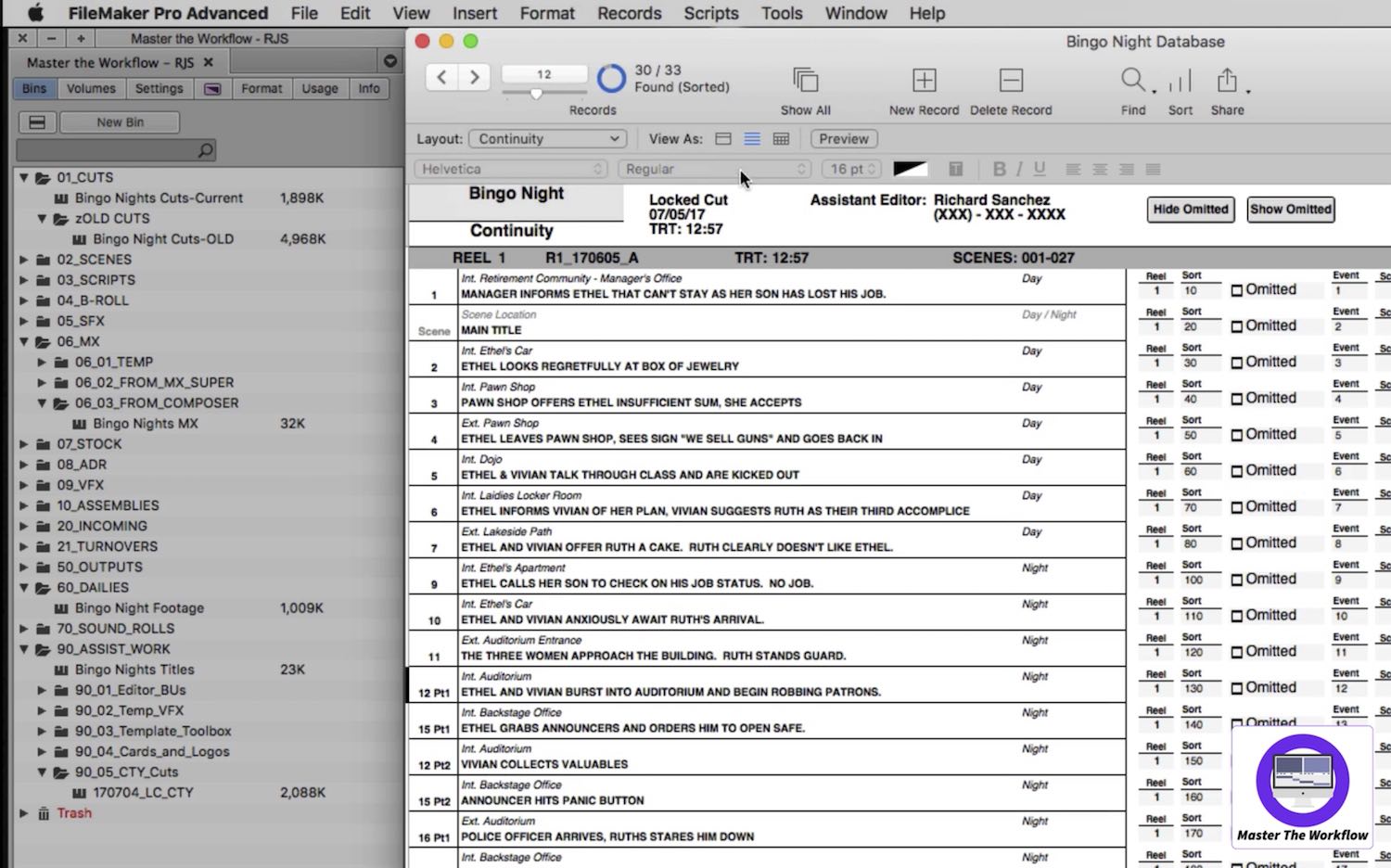
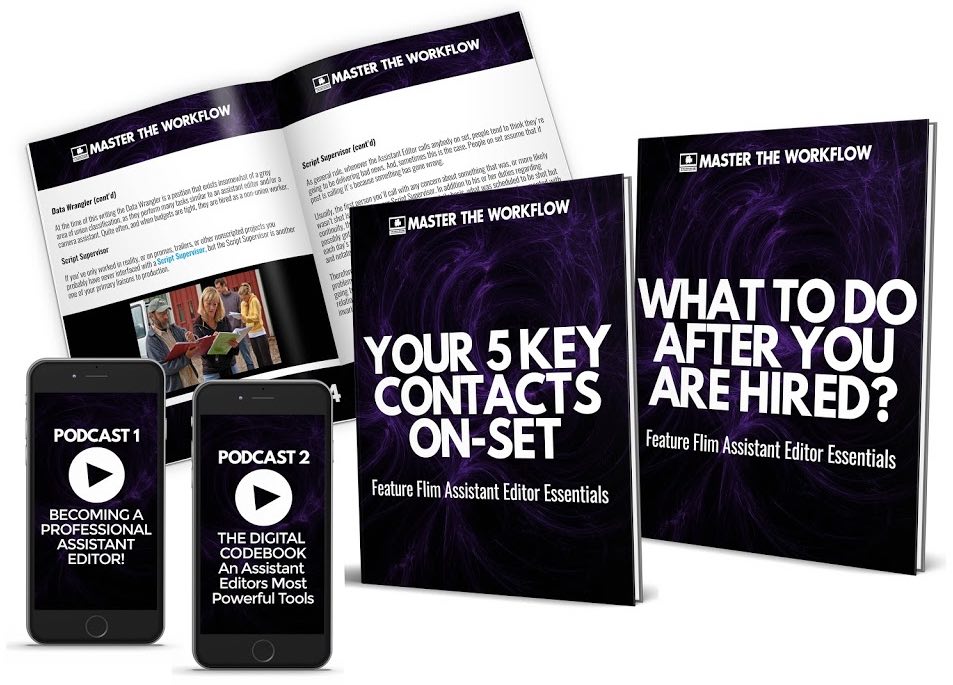

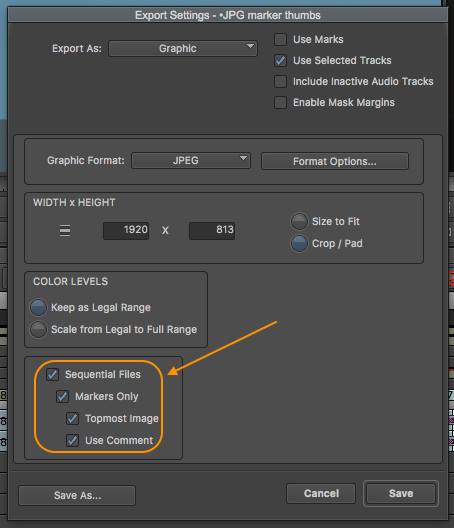

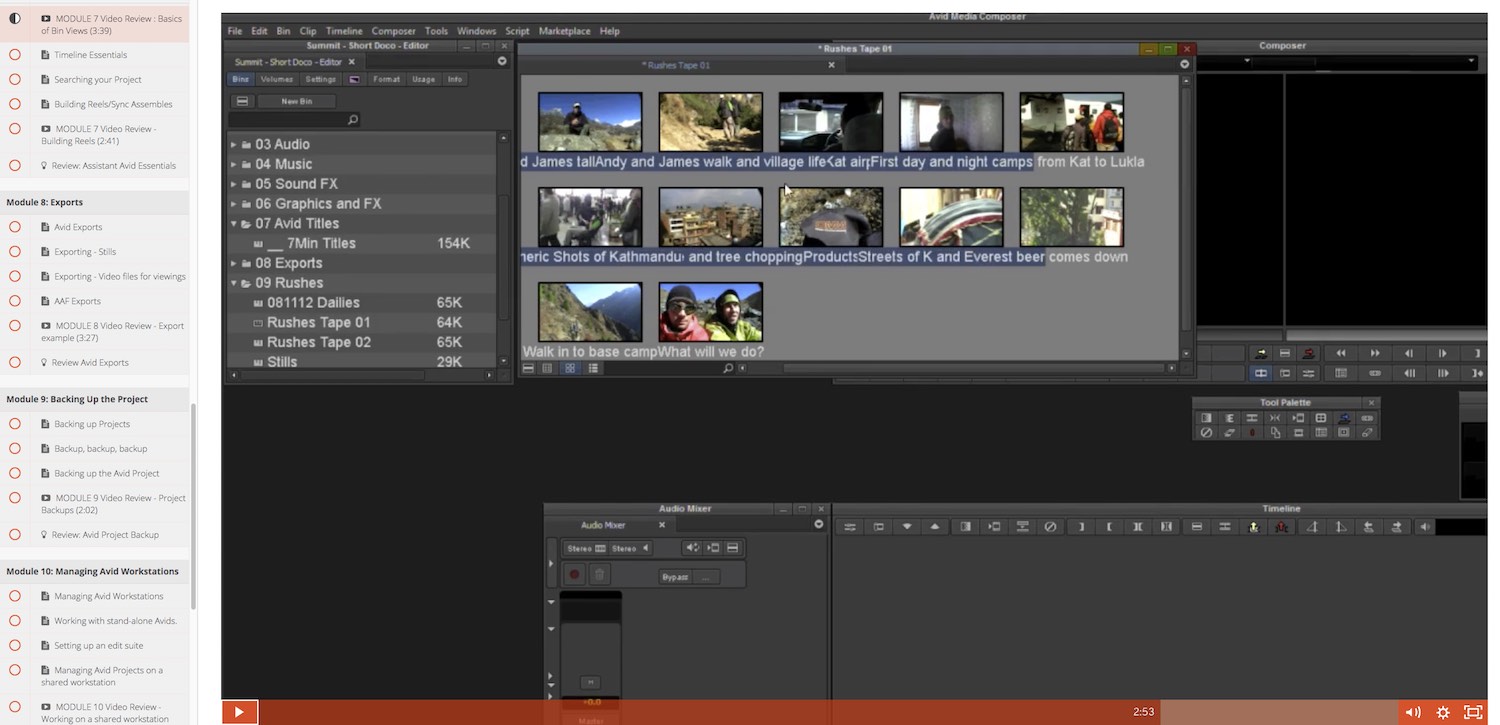





Jonny. I’ve since done an interview with the assistant editor on Mank – Ben Insler. Also, the last interview I did with John Axelrad he invited his assistant on that one so that’s editor/assistant.